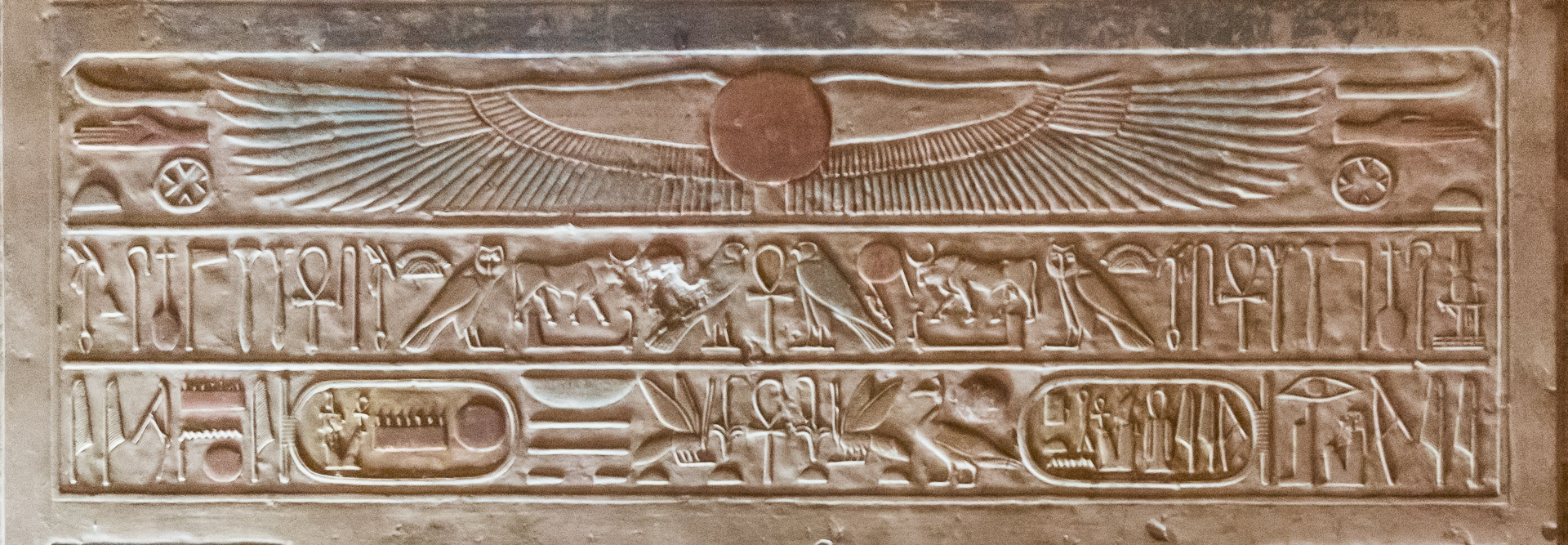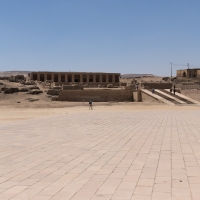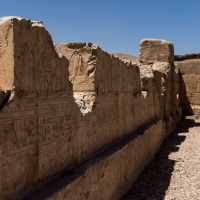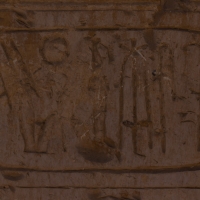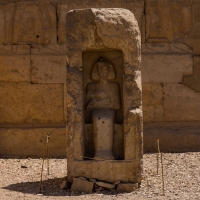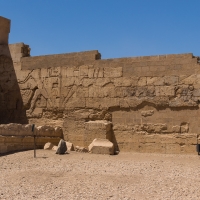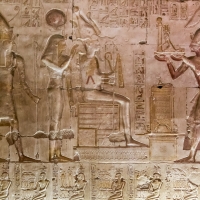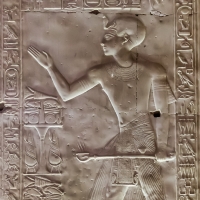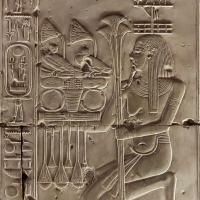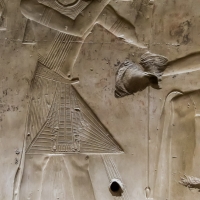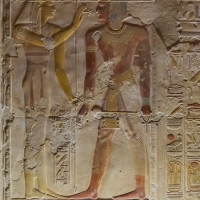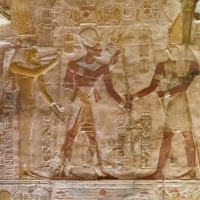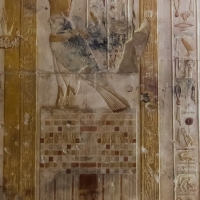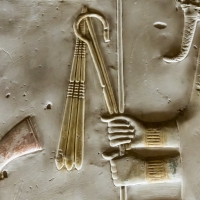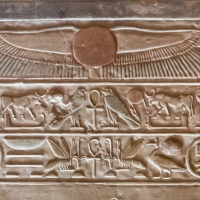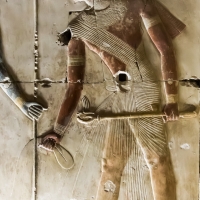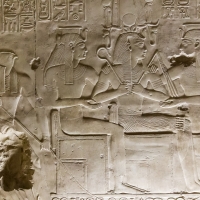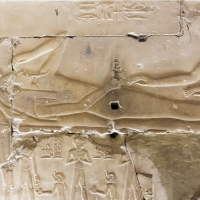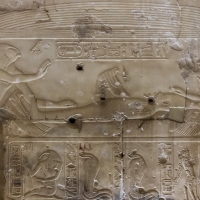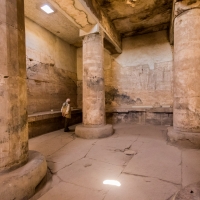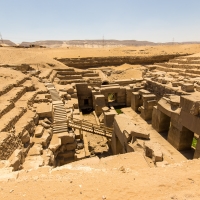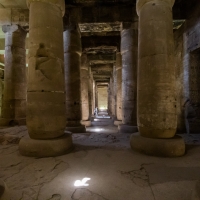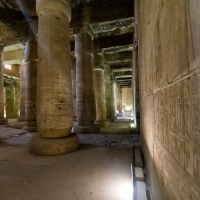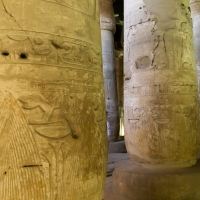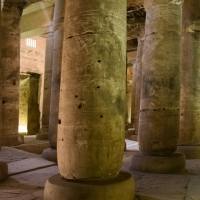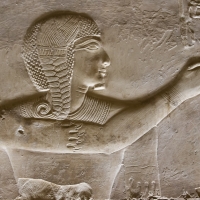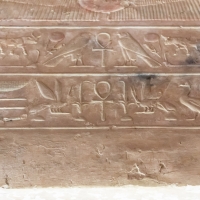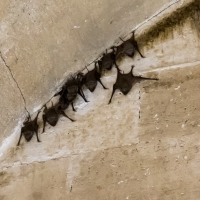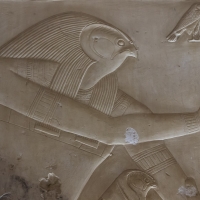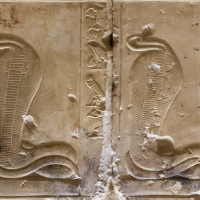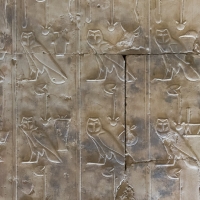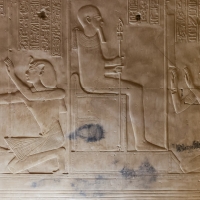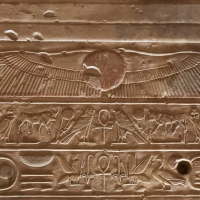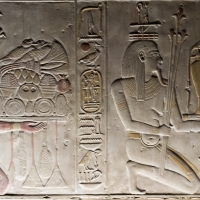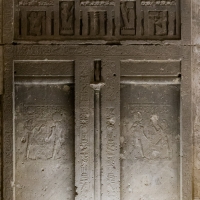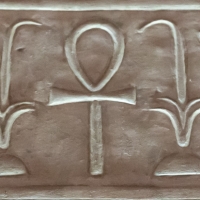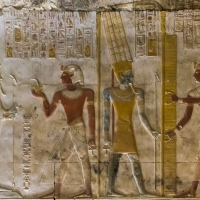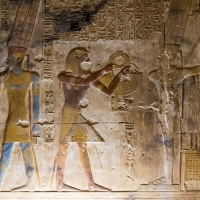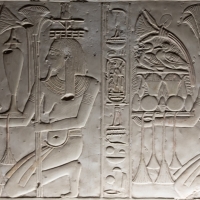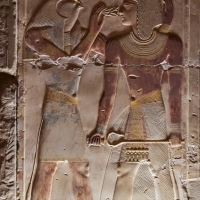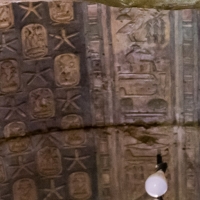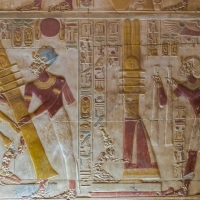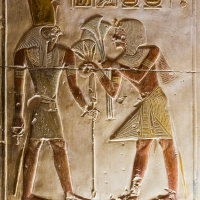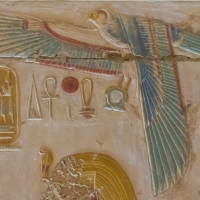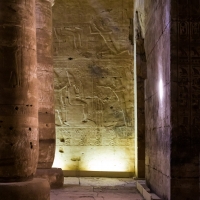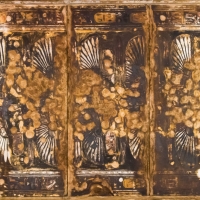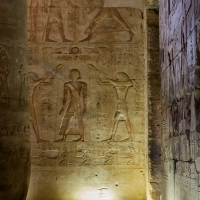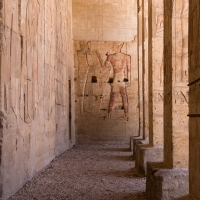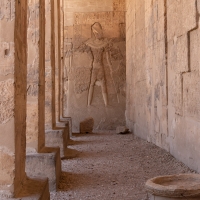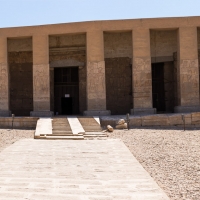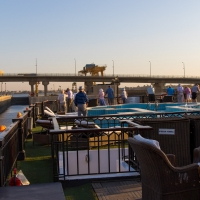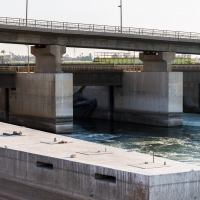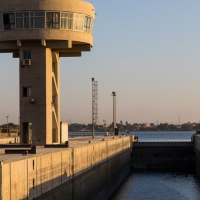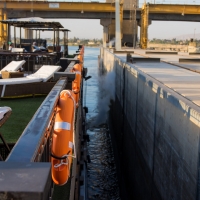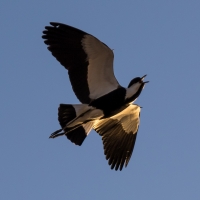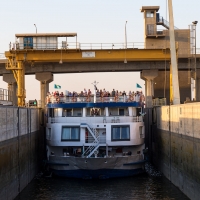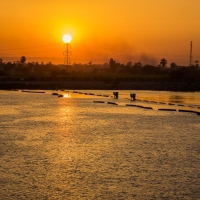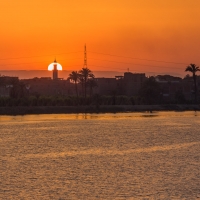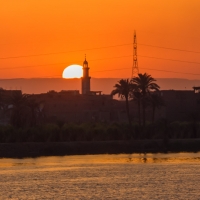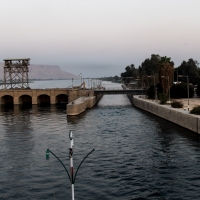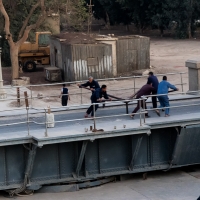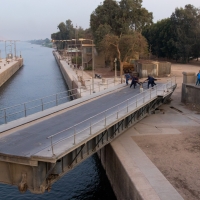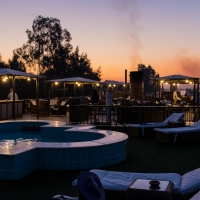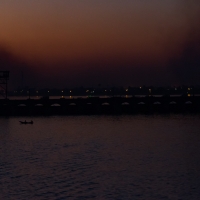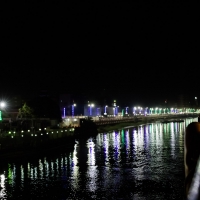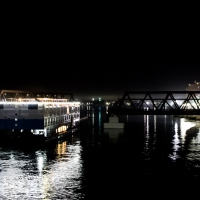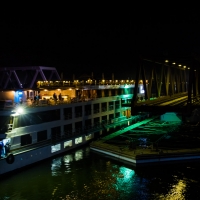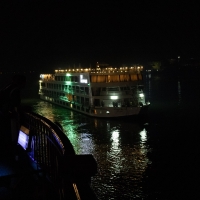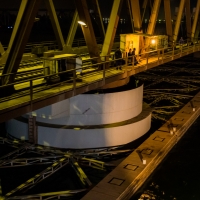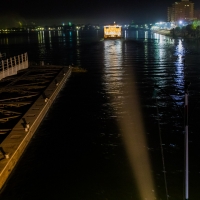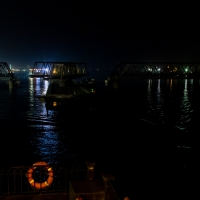Today was meant to be a very early morning start for out boat, 3.30, but somehow it was delayed an hour or so. We arrived at Al Balyana along with the German boat. They made it to Abydos before us, but we were told they would be rushing on elsewhere. The coach trip to Abydos was slow with the convoy of several coaches being herded through the narrow streets to the temple. These streets ,with the milling, waving people, are not designed for traffic, especially large coaches.
As well as us and the Germans at Abydos, there were crowds of Egyptian school children. Anwar showed as the mud walls and the smaller temple of Rameses II first. We had just finished with this before we became inundated with school children. A quick look at the Nilometer, and then up on to the roof of the Temple of Seti I. Next a tour of the temple, with huge columns, and high ceilings. Where the roof had been cleaned of black mould, there were delightful coloured ceiling paintings. The more able also visited the catacombs which entailed a short ladder, followed by a low three foot drop on entry. Our tour leader advised it was not for short legs, so R declined. (We were told that a Nilometer was used to check the level of the Nile from which the priest could determine the amount of tax to be paid by the farmers.)
The engravings on the limestone, and even the sandstone were exquisite. It is such a pity that the Roman/Christians disfigured so much of what they thought was inappropriate. There was also a wall carving listing the cartouches of all pharaohs up until that time, excluding five (Hatshepsut, Akhenaten, Smenkhkare (who was perhaps Akhenaten’s wife Nefertiti), Tutankhamun & Ay). We should have remembered these five cos they formed a question in the quiz.
Some lovely large bats were also roosting in the temple. By this time we had the temple almost to ourselves, the Germans and school children had all departed. I really did need a human figure in some of the pictures to show the true scale of the temple.
Back at the boat, we continued our cruised south with the Germans behind. We passed
We then travelled on to the town of Naga Hammi (aka Abo Homar) where we moored up outside a restaurant blocking the view of the Nile from the diners. Here we had dinner on our boat, waiting for the two large swing bridges to be opened, a road bridge and a rail bridge.
Everyone was in bed before the bridge was opened, but I noticed at 11.00 pm we had started to move, so rushed up on deck to witness the passage through the bridges. Three large boats had waited, us and the Germans and another boat travelling north in the opposite direction. The bridge opening was late in the evening to reduce the chance of the bridge sticking from the expanded rail tracks from the day time heat, or was it because there was less traffic and no trains coming by?
We shortly moored up again for the night on the south side of the bridge. The reception & waiting staff, who were normally well-dressed, appeared now to be all in dress-down, jeans and T-shirts. Think they were surprised to see me prowling around with a camera.
